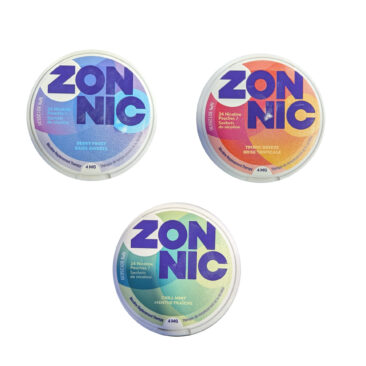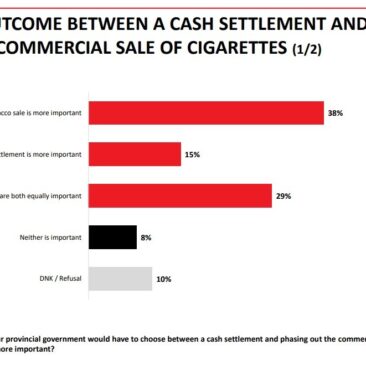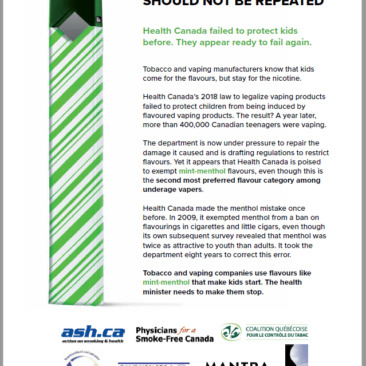Dr. Kessler, former Commissioner of the U.S. Food and Drug Administration was talking to the media this week about the problems with the JUUL vaping product. He predicted that JUUL and other similarly designed vaping products are unlikely to be approved by the FDA. (After May 2020, the FDA will be reviewing each e-cigarette design to decide whether there is a public health benefit to allowing it on the market. There is no such review planned for Canada).
JUUL has been much criticized for its appeal to young people. and has been the subject of repeated hearings by the U.S. Congress. As part of those hearings, Dr. Kessler wrote a letter to Congress officials to describe how the very design of JUUL ensnares youth.
“The unique design of JUUL may facilitate initiation by young people”
In his analysis, Dr. Kessler reached back into tobacco industry files to find that, as early as 1954, the tobacco industry was experimenting with organic acids to produce nicotine salts which had the effect of lowering the pH of cigarettes, thereby reducing harshness, creating a “smooth” smoke and making tobacco smoke easier to inhale.
He explains how JUUL has revived this organic acid technology with the use of benzoic acid, fullfilling a prediction made by the industry in 1985 that “product design changes which make cigarettes more palatable, easier to smoke, or more addictive are also likely to encourage greater uptake of smoking.”
There are no built-in “speed bumps”
Dr. Kessler compared cigarette initiation to a journey with speed bumps. A cigarette might last for 10 or 15 puffs, then it must be extinguished before lighting another. As a result, it might take a new teenage smoker days or weeks to to consume the 200 or so puffs in his first pack of cigarettes, slowly traversing the “speed bumps” of lighting another and another along the way.
Today, the new teenage smoker is on a superhighway to addiction. There are no speed bumps to slow him or her down. The JUUL pod contains about 200 puffs and a neophyte smoker might consume the whole thing in just a day or two. Becoming addicted to nicotine, a process that for some would take months or years, can now be accomplished in just days or weeks.
Dr. Kessler also pointed to other design features which facilitate youth uptake:
- an increase in nicotine concentration from 1 or 2.4% to a more addictive 5% was made possible because the organic salts made the experience less harsh.
- use of flavours like tobacco, mint, fruit and dessert, which mask the off notes and appeal to children with sweetness. (Even though JUUL stopped using some flavours in the USA recently, they have adopted no such policy in Canada.)
- limited visible vapour emission (to avoid detection).
The last word goes to Dr. Kessler (and Addison Yeoman):
“The words Addison Yeoman, the general counsel of the tobacco company, Brown & Williamson wrote in 1963 are equally applicable today, ‘we are, then in the business of selling nicotine, an addictive drug…’ A long and tragic history has taught us the nicotine addiction begins as a pediatric disease.”











